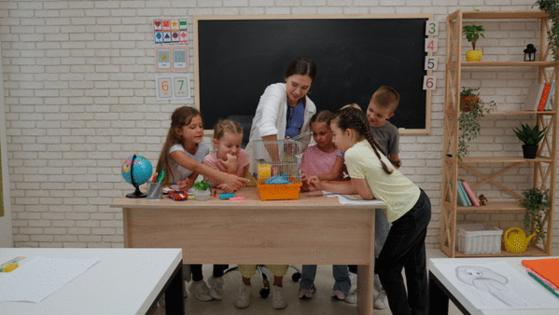Commentary: Thinking of buying animals for the classroom? Here's why it's not a great idea -- and what to get instead
Published in Op Eds
As educators, we’re always looking for ways to keep our students engaged and to provide them with learning experiences that will last a lifetime. Teachers help kids make tabletop volcanoes erupt, lead field trips to museums and award prizes for the most books read. Some also consider purchasing small animals such as hamsters, mice, guinea pigs, birds and reptiles to serve as classroom “pets.”
What well-intentioned instructors may not realize is that these living beings are extremely delicate and require consistent, specialized care from informed guardians. When classroom environments can’t meet their unique needs, the results can be deadly. Fortunately, exciting new teaching tools offer engrossing educational opportunities that animals can’t—and they’re winning over teachers and students alike.
Pet stores market small animals as “starter pets,” sending them off in dismally small, barren cages with buyers who are unprepared for the challenge of caring for them. For example, rabbits, guinea pigs and other species are skittish prey animals, and many never adjust to being picked up and held. Mice and other small mammals are nocturnal and must sleep during the day. When kept in brightly lit, noisy classrooms and regularly removed from their cages, their natural sleep rhythms are disrupted and their health deteriorates.
Gerbils, guinea pigs, rabbits and goldfish need a companion of their own species, yet they’re often kept in solitary confinement, becoming lonely and depressed. Like all animals, reptiles, birds and small mammals require regular and emergency veterinary care, but most veterinary offices don’t treat “exotics.”
Classroom animals are commonly left behind during fire and evacuation drills, and classes typically don’t make a plan to save them in an actual emergency. This sends the dangerous message that animals’ safety and well-being are inconsequential, undermining the lessons of care and responsibility that educators are aiming to instill. These animals are also commonly left alone overnight as well as on weekends and holidays. The ones who aren’t cast aside are sometimes sent to unscreened homes with people who may not know how to care for them.
PETA has received numerous reports about neglect of or cruelty to animals kept in schools, including instances in which a rabbit’s tail was pulled off and a hamster was tortured to death.
Having classroom “pets” can endanger students and teachers, too. In addition to triggering allergy attacks, animals can spread bacteria such as salmonella and other transmittable diseases.
There are countless fun, captivating teaching tools that impart lessons on responsibility and the natural world and don’t put anyone at risk. Many educators ask children to care for class plants and even school gardens. Others “adopt” animals at accredited sanctuaries and take trips to visit them. Kids love wildlife-watching excursions and live video streams. Robotic “pets” interact just like real animals, and AI companions can help teach math, engineering and coding. In addition, TeachKind offers schools free Ratty the Rat plushies that come with activity guides.
Ultimately, choosing not to force animals to stand in as instructional aids teaches one of the most important lessons children can learn: kindness and respect for others.
____
Lisbet Chiriboga, M.S. Ed., is senior program manager at TeachKind, the humane education division of PETA, 501 Front St., Norfolk, VA 23510; TeachKind.org.
_____
©2025 Tribune Content Agency, LLC.
























































Comments